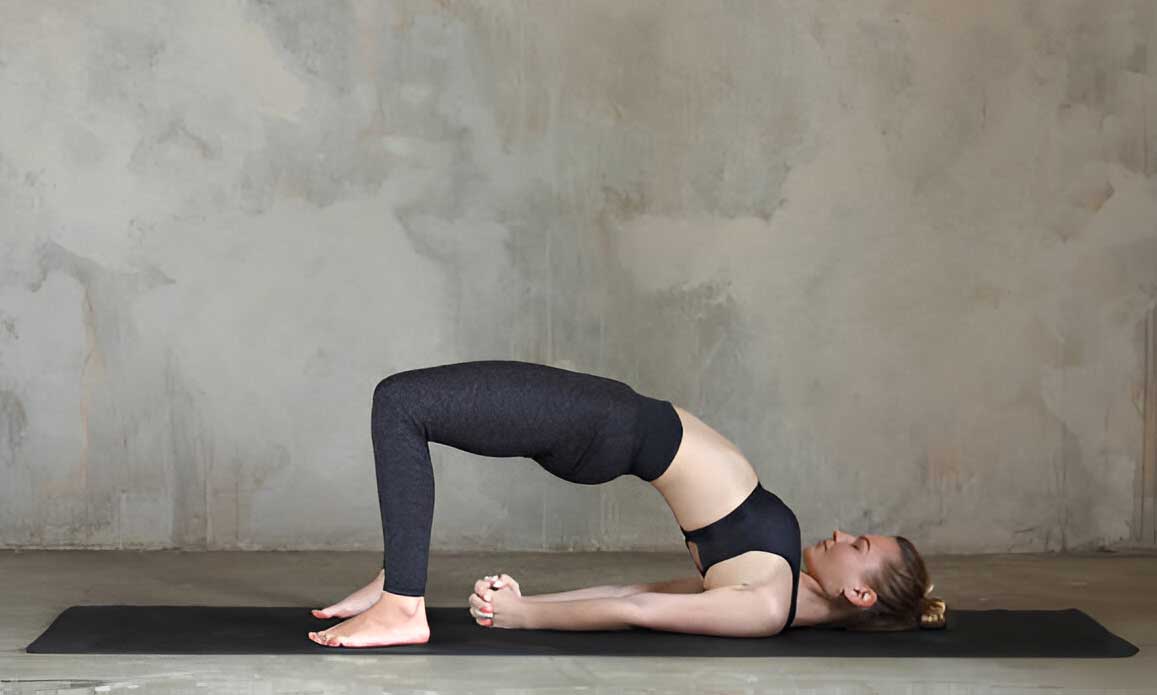How Does Yoga Benefit the Nervous System?
The nervous system is a complex network that controls and coordinates all the functions of the body. It is responsible for processing sensory information, regulating bodily functions, and responding to internal and external stimuli. The nervous system comprises two main parts: the central nervous system (CNS), which includes the brain and spinal cord, and the peripheral nervous system (PNS), which connects the CNS to the rest of the body. A healthy nervous system is essential for overall well-being. Yoga, an ancient practice that combines physical postures, breath control, and meditation, offers profound benefits for the nervous system. This article explores how yoga benefits the nervous system and provides possible treatment options to enhance these benefits.
The Connection Between Yoga and the Nervous System
Yoga benefits the nervous system through various mechanisms that involve both physical and mental aspects of health. These mechanisms include:
- Reducing Stress: Chronic stress triggers the “fight or flight” response, which activates the sympathetic nervous system. Prolonged activation can lead to anxiety, depression, and other health issues. Yoga activates the parasympathetic nervous system, promoting relaxation and reducing stress.
- Enhancing Neuroplasticity: Neuroplasticity is the brain’s ability to reorganize itself by forming new neural connections. Yoga and meditation stimulate neuroplasticity, improving cognitive function and emotional resilience.
- Balancing the Autonomic Nervous System: The autonomic nervous system (ANS) controls involuntary bodily functions such as heart rate, digestion, and respiratory rate. Yoga helps balance the ANS by promoting harmony between the sympathetic and parasympathetic systems.
- Improving Circulation: Yoga enhances blood flow, ensuring that the brain and nervous system receive adequate oxygen and nutrients. Improved circulation supports overall nervous system function.
- Reducing Inflammation: Chronic inflammation can damage the nervous system and contribute to neurodegenerative diseases. Yoga has anti-inflammatory effects that help protect the nervous system from damage.
Yoga Poses That Benefit the Nervous System
Certain yoga poses, known as asanas, are particularly effective for supporting the nervous system. These poses target different aspects of nervous system health, including relaxation, circulation, and neuroplasticity. Here are some of the most effective yoga poses for enhancing nervous system function:
1. Child’s Pose (Balasana)
Child’s Pose is a restorative yoga posture that helps reduce stress and calm the mind. This pose promotes relaxation by activating the parasympathetic nervous system, which supports the body’s rest and digest functions.
How to Perform:
- Kneel on the floor with your big toes touching and your knees spread apart.
- Sit back on your heels and lower your torso between your thighs.
- Extend your arms forward or rest them alongside your body, palms facing up.
- Hold this pose for 1-3 minutes, breathing deeply and allowing your body to relax.
Benefits:
- Activates the parasympathetic nervous system
- Promotes relaxation and stress relief
- Calms the mind and body
2. Downward-Facing Dog (Adho Mukha Svanasana)
Downward-Facing Dog is a versatile yoga pose that stretches the entire body and improves circulation. This pose enhances blood flow to the brain and nervous system, supporting cognitive function and emotional balance.
How to Perform:
- Start on all fours with your hands slightly in front of your shoulders.
- Tuck your toes under and lift your hips toward the ceiling, forming an inverted “V” shape.
- Keep your knees slightly bent if your hamstrings are tight, and press your heels toward the floor.
- Hold this pose for 1-2 minutes, focusing on deep, steady breathing.
Benefits:
- Improves circulation and oxygenation of the brain
- Reduces stress and anxiety
- Supports cognitive function and emotional balance
3. Bridge Pose (Setu Bandhasana)
Bridge Pose is an effective yoga exercise for strengthening the lower back and core muscles. This pose also stimulates the vagus nerve, a critical component of the parasympathetic nervous system, promoting relaxation and reducing stress.
How to Perform:
- Lie on your back with your knees bent and feet flat on the floor, hip-width apart.
- Place your arms alongside your body, palms facing down.
- Inhale and lift your hips toward the ceiling, pressing your feet and arms into the floor.
- Hold this pose for 30 seconds to 1 minute, then slowly lower your hips back to the floor.
Benefits:
- Stimulates the vagus nerve
- Promotes relaxation and stress relief
- Enhances circulation and nervous system function
4. Legs Up the Wall Pose (Viparita Karani)
Legs Up the Wall Pose is a restorative yoga exercise that helps reduce stress, improve circulation, and enhance nervous system function. This pose promotes relaxation by activating the parasympathetic nervous system and calming the mind.
How to Perform:
- Sit close to a wall with your knees bent and feet on the floor.
- Lie back and swing your legs up the wall, resting your arms at your sides.
- Hold this pose for 5-10 minutes, breathing deeply and allowing your body to relax.
Benefits:
- Activates the parasympathetic nervous system
- Promotes relaxation and stress relief
- Enhances circulation and nervous system function
5. Savasana (Corpse Pose)
Savasana is a restorative yoga posture that promotes deep relaxation and stress relief. This pose helps calm the nervous system, reduce stress, and improve overall well-being.
How to Perform:
- Lie flat on your back with your legs extended and arms at your sides, palms facing up.
- Close your eyes and take slow, deep breaths, allowing your body to relax completely.
- Hold this pose for 5-10 minutes, focusing on your breath and letting go of any tension.
Benefits:
- Calms the nervous system
- Promotes deep relaxation and stress relief
- Enhances overall well-being
6. Seated Forward Bend (Paschimottanasana)
Seated Forward Bend is a calming yoga pose that stretches the entire back, including the spine and nervous system. This pose helps reduce stress, calm the mind, and improve circulation to the brain.
How to Perform:
- Sit on the floor with your legs extended in front of you.
- Inhale and lengthen your spine, reaching your arms overhead.
- Exhale and hinge at your hips, reaching for your feet or shins.
- Hold this pose for 1-2 minutes, breathing deeply and relaxing into the stretch.
Benefits:
- Reduces stress and calms the mind
- Improves circulation to the brain
- Enhances nervous system function
7. Tree Pose (Vrksasana)
Tree Pose is a balancing yoga posture that helps improve focus, concentration, and mental clarity. This pose stimulates the nervous system, enhancing neuroplasticity and cognitive function.
How to Perform:
- Stand with your feet hip-width apart and your arms by your sides.
- Shift your weight onto your right foot and place your left foot on your right inner thigh or calf.
- Bring your hands together in prayer position at your chest.
- Hold this pose for 30 seconds to 1 minute, then switch sides.
Benefits:
- Improves focus, concentration, and mental clarity
- Stimulates the nervous system and enhances neuroplasticity
- Supports cognitive function and emotional balance
The Role of Pranayama in Nervous System Health
Breath control, or pranayama, is an integral part of yoga that supports nervous system health by reducing stress, improving circulation, and enhancing oxygenation of the brain. Practicing pranayama regularly can calm the nervous system, promote relaxation, and support overall well-being.
Effective Pranayama Techniques for Nervous System Health:
- Nadi Shodhana (Alternate Nostril Breathing): This technique balances the body’s energy channels, reduces stress, and promotes relaxation by calming the nervous system.
- Ujjayi (Ocean Breath): This technique involves slow, deep breathing with a slight constriction of the throat, creating a soothing sound that calms the nervous system.
- Bhramari (Bee Breath): This technique involves making a humming sound during exhalation, which helps calm the mind and nervous system.
How to Perform Pranayama:
- Nadi Shodhana: Sit comfortably and close your right nostril with your thumb. Inhale deeply through your left nostril, then close it with your ring finger. Exhale through your right nostril. Continue alternating nostrils for 5-10 minutes.
- Ujjayi: Sit comfortably and take a deep breath in through your nose. Exhale slowly through your nose while slightly constricting your throat to create a soft, ocean-like sound. Continue this deep, rhythmic breathing for 5-10 minutes.
- Bhramari: Sit comfortably and take a deep breath in through your nose. Exhale slowly, making a humming sound like a bee. Continue this practice for 5-10 minutes, focusing on the calming vibrations.
Meditation and Nervous System Health
Meditation is another crucial aspect of yoga that benefits the nervous system. Regular meditation practice helps reduce stress, improve mental clarity, and promote emotional balance. A calm and balanced mind supports nervous system health by reducing the production of stress hormones that can damage the nervous system over time.
Meditation Techniques for Nervous System Health:
- Mindfulness Meditation: Focus on your breath and observe your thoughts without judgment. Practice this for 10-15 minutes daily to reduce stress and support nervous system health.
- Loving-Kindness Meditation: Focus on sending positive thoughts and intentions to yourself and others. This practice promotes emotional balance and enhances overall well-being, supporting nervous system health.
- Guided Imagery: Visualize a peaceful place or scenario that brings you calm and relaxation. This technique enhances the mind-body connection and supports nervous system health by reducing stress and promoting relaxation.
Diet and Nervous System Health
While yoga offers significant benefits for the nervous system, its effects can be enhanced by a balanced, nutrient-rich diet. Consuming foods high in vitamins, minerals, and antioxidants supports nervous system health and helps the body manage stress.
Foods to Include:
- Leafy Greens: Rich in folate, which supports brain function and nervous system health.
- Omega-3 Fatty Acids: Found in fish, flaxseeds, and walnuts, omega-3s support brain health and reduce inflammation.
- Berries: High in antioxidants that protect the nervous system from oxidative stress.
- Nuts and Seeds: Rich in magnesium, which helps calm the nervous system and reduce stress.
Foods to Avoid:
- Processed Foods: High in sugar and unhealthy fats, which can impair nervous system function.
- Caffeine: Excessive consumption can increase stress levels and overstimulate the nervous system.
- Sugary Foods: High sugar intake can lead to energy crashes and irritability, affecting nervous system health.
Possible Treatment Options to Support Nervous System Health
In addition to yoga, other treatments can support nervous system health and enhance overall well-being. These treatments can be integrated into a comprehensive wellness routine to optimize nervous system function.
1. Acupuncture
Acupuncture is a traditional Chinese medicine technique that involves inserting thin needles into specific points on the body. This treatment is believed to stimulate the flow of energy (Qi) and support nervous system health.
Benefits:
- Enhances nervous system function
- Reduces stress and anxiety
- Promotes relaxation and emotional balance
2. Massage Therapy
Massage therapy promotes relaxation, reduces stress, and stimulates circulation. Regular massage therapy can support nervous system health by enhancing lymphatic drainage and promoting overall well-being.
Benefits:
- Reduces stress and anxiety
- Enhances circulation and lymphatic flow
- Supports nervous system health
3. Herbal Supplements
Certain herbal supplements can support nervous system health by providing essential nutrients and promoting overall well-being. These supplements are often used in conjunction with a balanced diet and regular yoga practice to enhance nervous system function.
Common Nervous System-Supporting Supplements:
- Ashwagandha: An adaptogenic herb that supports nervous system health and reduces stress.
- Rhodiola Rosea: An herb that enhances mental clarity and supports nervous system function.
- Valerian Root: A herb known for its calming effects on the nervous system.
Consult a healthcare provider before starting any supplement regimen.
4. Sauna Therapy
Sauna therapy promotes detoxification by inducing sweating, which helps eliminate toxins and support nervous system health. Infrared saunas are particularly effective, as they penetrate deeper into the tissues, enhancing the detoxification process and supporting the nervous system.
Benefits:
- Supports detoxification
- Promotes relaxation and stress reduction
- Enhances circulation and nervous system function
Incorporating Yoga into a Nervous System-Supporting Routine
To maximize the benefits of yoga for nervous system health, it’s important to incorporate it into a well-rounded wellness routine. This routine should include regular yoga practice, a balanced diet, adequate hydration, and possibly additional treatments like acupuncture or massage therapy.
Sample Daily Nervous System-Supporting Routine:
- Morning:
- Start with a glass of warm lemon water to stimulate digestion and support nervous system health.
- Practice a gentle yoga routine, focusing on poses that enhance relaxation and circulation.
- Eat a nutrient-rich breakfast, such as a smoothie with leafy greens, berries, and nuts.
- Afternoon:
- Incorporate light physical activity, such as walking or swimming, to keep the nervous system active.
- Enjoy a lunch rich in nervous system-supporting foods, such as fish, leafy greens, and nuts.
- Stay hydrated by drinking water or herbal teas.
- Evening:
- Practice a restorative yoga routine, focusing on poses that promote relaxation and stress relief.
- Enjoy a light dinner, avoiding processed foods and excessive sugar.
- Consider taking a nervous system-supporting supplement, if recommended by a healthcare provider.
- Bedtime:
- Perform a short meditation or mindfulness practice to reduce stress and promote relaxation.
- Get adequate sleep, as the body’s nervous system functions most effectively during rest.
Conclusion
Yoga is a powerful tool for supporting the nervous system, offering a holistic approach that enhances physical, mental, and emotional well-being. Through specific poses, breath control, and meditation, yoga supports the body’s natural defenses, promoting better circulation, neuroplasticity, and stress reduction. When combined with a balanced diet, proper hydration, and additional treatments like acupuncture or massage therapy, yoga can play a central role in maintaining optimal nervous system health.
Whether you’re looking to strengthen your nervous system, improve your overall health, or reduce stress, incorporating yoga into your daily routine can provide lasting benefits. With consistent practice and a mindful approach, yoga can become a powerful tool in your journey toward a healthier, more resilient nervous system.








